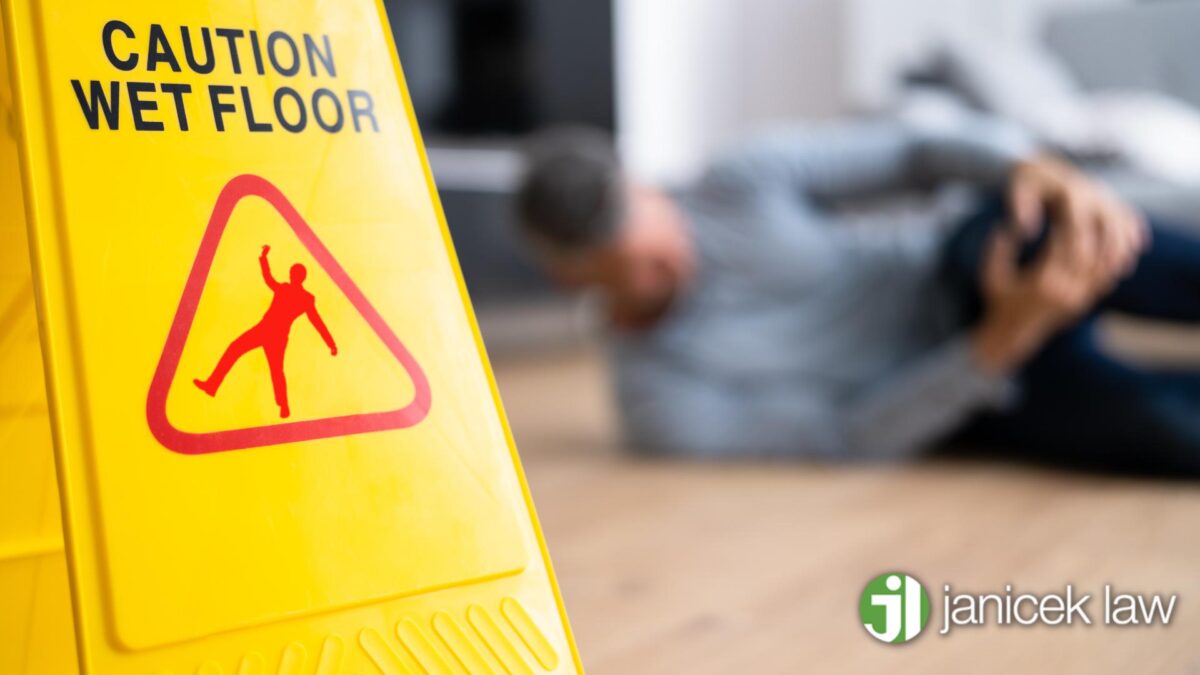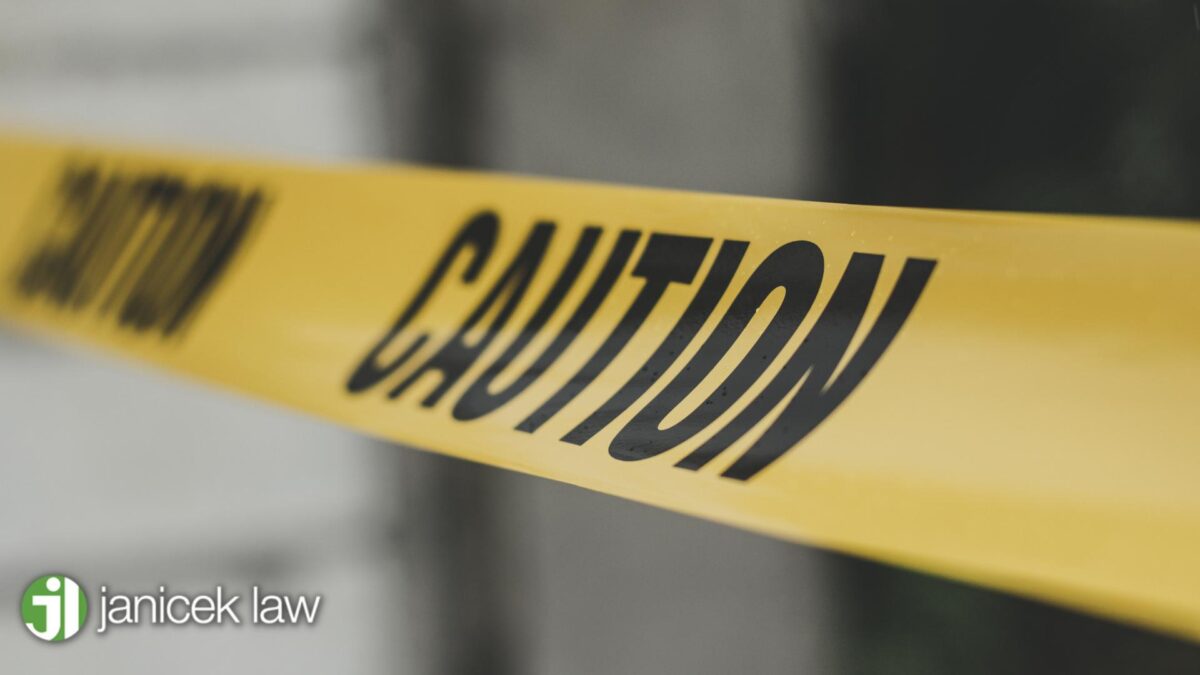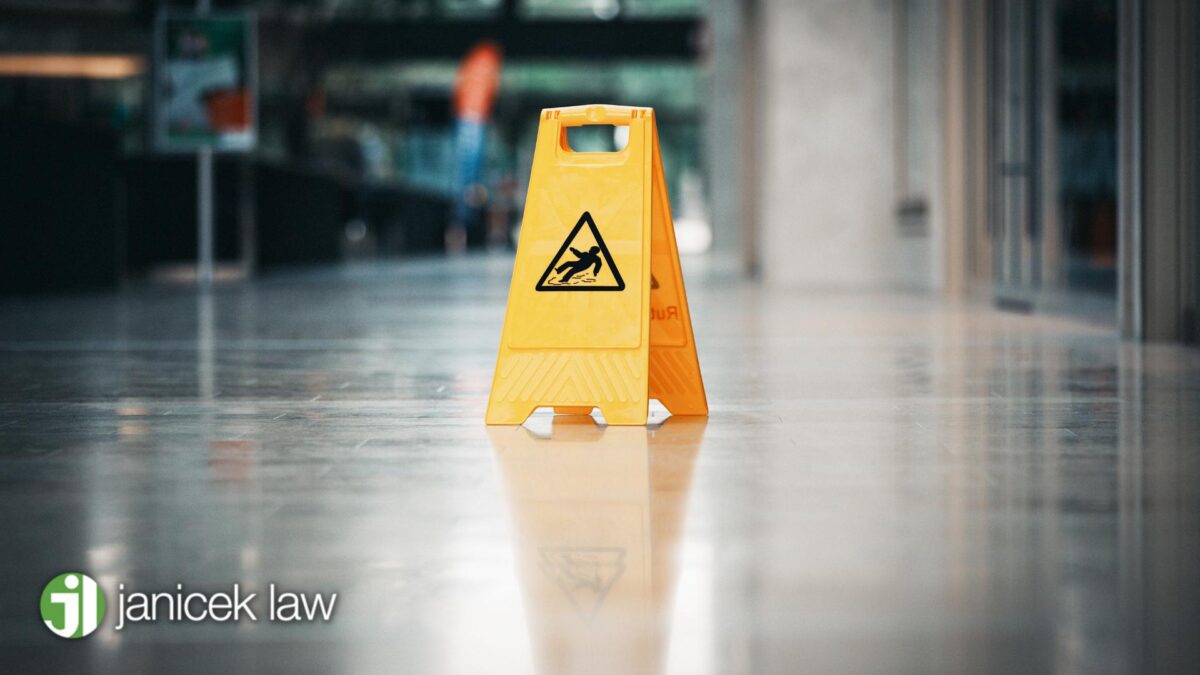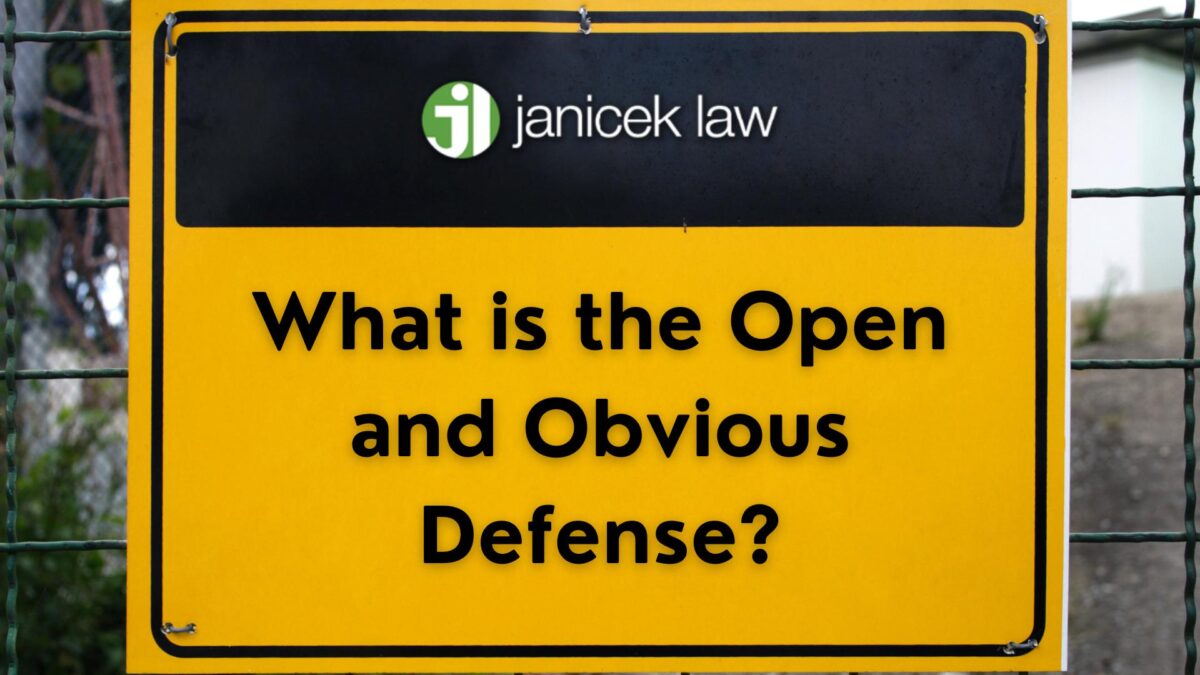The open and obvious defense plays a significant role in premises liability cases. In our latest blog, the San Antonio premises liability attorneys will explain the open and obvious rule and its role in premises liability claims.
Understanding this legal concept is important for anyone injured on another person’s property due to their negligence. At Janicek Law, our premises liability attorneys are experienced in navigating the challenges of the open and obvious doctrine. Using this knowledge, they defend clients against negligent property owners and recover compensation for injuries and damages.
Whether you’ve suffered injuries on someone else’s property, been involved in an accident, or faced any personal injury, Janicek Law is ready to represent you. To discuss your premises liability claim with one of our experienced attorneys, call 210-366-4949 to schedule a free consultation today.
What is Premises Liability Law?
Premises liability law revolves around the principle that property owners are liable for accidents and injuries occurring on their premises. From slips and falls to poor maintenance or security lapses, this legal concept emphasizes the owner’s duty to maintain a safe environment for all who enter their property, whether visitors, tenants, or customers. The scope of this duty varies based on the relationship between the property owner and the person injured, categorized as invitees, licensees, or trespassers.

Common Types of Premises Liability Violations
Common types of premises liability violations include a variety of situations where property owners fail to maintain a safe environment or warn against a dangerous condition, leading to potential harm to visitors or occupants. These violations often include the following:
- Slip and Fall Accidents: When someone slips and falls due to unsafe conditions like wet floors, uneven surfaces, or poorly maintained walkways. Our San Antonio slip and fall accident attorneys have extensive experience in handling these types of cases.
- Inadequate Maintenance: Issues like broken stairs, malfunctioning elevators, potholes in parking lots, or crumbling infrastructure that can cause accidents or injuries.
- Negligent Security: In areas where criminal activity is common, failure to provide adequate security measures (like lighting, locks, or security personnel) that lead to assaults or thefts can be grounds for liability. Contact a San Antonio negligent security lawyer to learn more about your legal options.
- Defective Conditions: Injuries caused by inherently dangerous or defective conditions on the property, like exposed wiring or hazardous materials.
- Inadequate Lighting: Poorly lit stairwells, parking lots, or hallways that contribute to accidents or criminal attacks fall under this category.
- Dog Bites and Animal Attacks: Property owners can be held accountable for injuries caused by animals on their property, especially if they know the animal’s aggressive tendencies. Allow a San Antonio dog bite lawyer to handle your case and fight for your justice.
- Swimming Pool Accidents: These include drownings and slip and falls due to a lack of safety measures or supervision around pools. Our San Antonio swimming pool drowning lawyers have what it takes to recover maximum compensation.
If you were injured on another person’s property and believe you have a slip and fall case or other premises liability claim, the San Antonio personal injury attorneys can help. To start filing a premises liability case, contact Janicek Law today.
When is a Property Owner Liable for Harm Caused by a Condition on Their Land?
A landowner can be liable for injuries when proven negligent in maintaining a safe environment. Liability generally relies on whether the landowner knew, or should have reasonably known, about the obvious hazard and did not take appropriate action to fix it or warn others.
This responsibility varies depending on the status of the person injured (invitee, licensee, or trespasser) and the nature of the hazard. For invitees, such as customers in a store, landowners have a high duty of care to inspect for and address dangers regularly. With licensees, such as social guests, owners must fix or warn about known hazards. The duty is generally lower for trespassers except for children, where special considerations apply, particularly for “attractive nuisances” like swimming pools.

What is the Open and Obvious Defense?
The open and obvious rule is a legal concept in premises liability law where a property owner argues that a hazard was so clear and apparent that any reasonable person would have noticed and avoided it, negating the owner’s liability for injuries arising from that hazard. This defense hinges on the premise that the property owner is not responsible for protecting individuals from unreasonable risk.
Exceptions to the Open and Obvious Defense
The open and obvious defense is a common strategy property owners use in premises liability cases, but there are some exceptions where this defense may not hold. These exceptions include situations where the injured person was reasonably distracted and did not notice the hazard, or where the hazard was in an area they had to pass and could not avoid. If the property owner could foresee that the obvious hazard would likely cause harm, this could also negate the defense.

Defense Strategies for the Open and Obvious Doctrine
When challenging the open and obvious rule in premises liability cases, the focus is on highlighting elements that prove the property owner could have reasonably prevented the accident, even if the hazard seemed obvious.
In the section below, our San Antonio premises liability attorneys will explain some defense strategies that can be used in open and obvious cases.
The Danger Wasn’t Open or Obvious
In some premises liability cases, the danger was not obvious to the injured party. This argument relies on the idea that the hazard was not easily noticeable, so the property owner cannot rely on the open and obvious defense.
Factors that support this claim might include poor lighting, obstructions that obscured the hazard, or a complex environment that made it difficult to notice the danger. Demonstrating that the injured person could not have reasonably foreseen or avoided the hazard due to these circumstances is crucial in establishing the property owner’s liability in such cases.
The Defendant Still Breached Their Duty of Care Despite the Open and Obvious Danger
Even when danger is considered open and obvious, it’s possible to argue that the defendant still breached their duty of care. This argument revolves around the idea that the property owner’s negligence went beyond the mere existence of the hazard. For instance, if the defendant was aware of the dangerous condition but failed to take necessary action to address it or provide adequate warnings, they may be held liable. This breach of duty could include failing to repair a known hazard, maintaining safe premises, or fulfilling their responsibilities in ensuring visitor safety.
Comparative Negligence Still Makes the Defendant Liable for the Victim’s Harm
In cases involving comparative negligence, the argument is that the defendant remains liable for the victim’s harm despite the victim’s own contributory negligence. Comparative negligence acknowledges that both parties may share some percentage of fault for an accident or injury. However, it does not remove the defendant’s responsibility entirely. Instead, it divides liability based on the degree of fault assigned to each party. Even if the victim is found partially at fault, the defendant is still held accountable for their share of the responsibility. Comparative negligence ensures that victims are not unfairly penalized for their actions while recognizing the defendant’s duty to maintain a safe space and prevent harm to others.
The Defendant Didn’t Use The Defense Properly
This argument suggests that the defendant failed to meet the criteria or substantiate their claim effectively. For instance, if the defendant did not adequately demonstrate that the hazard was genuinely open and obvious or failed to provide supporting evidence, the defense may be deemed invalid. If the defendant misapplied the defense by, for example, asserting that a hazard was open and obvious when it was not, their argument may be challenged.

Call a San Antonio Premises Liability Attorney at Janicek Law Today
If you or a loved one has suffered an injury due to unsafe or negligent property conditions, it’s crucial to seek legal guidance. At Janicek Law, our dedicated premises liability attorneys are here to fight for your rights and help you through this challenging legal process. Contact the San Antonio premises liability attorneys at 210-366-4949 to schedule a free consultation today.

